The retail world is smitten with tech. The promise of what it may bring — faster, more efficient processes, deeper customer engagement and increased profit margins — is never more apparent than at a convention. This year the show floor was full of amazing retail gadgets — many of which were practical, others that may take years to be fully embraced and deployed, and some that may never get off the ground due to an inability to scale.
However it plays out, the below tech has the potential to give retailers tools to reinvent the way consumers shop and receive products.
Smart checkout gets an upgrade
Self-checkout options are already deployed across drug and grocery stores, thus shoppers are familiar with the technology. That is, when it works. Current self-checkout systems are rarely seamless and can hold up lines instead of simplifying processes.
Freshhippo is a line of supermarkets backed by Alibaba. Its smart checkout systems are familiar but are a refinement of technology that is already on the market. Scanning is simplified and payment codes are readily recognized, with product information appearing on a large screen. Customers pay for plastic bags and can pick from two different sizes. A camera is above each station so sales associates can monitor if help is needed. Associates are also given smart watches to receive notifications about customers.
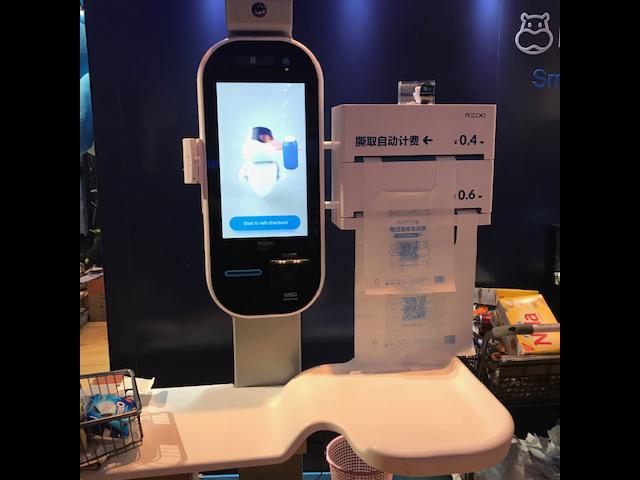
Kaarin Vembar for Retail Dive
The picture changes, the product stays the same
SmartPixels use 3D product visuals for interactive customer experiences. An item, like a shoe, acts as a blank canvas and a shopper personalizes it by viewing different color and pattern options superimposed on the product. Customers can see what the final product will look like instead of waiting for it to go into production through the use of an augmented display.
Companies can also use the technology to tell a brand story. (For example, by projecting an animation on a champagne bottle at an event.) SmartPixels cites Stella McCartney, Hermès, Berluti, Chloe, Disney and L’Oreal as some of its clients.
Kaarin Vembar for Retail Dive
Something of the sort
Tompkins Robotics is an automated, self-charging system that provides unit and parcel sorting. Instead of employees walking through a warehouse hundreds of times, the robots have the ability to batch orders together. They are suited to sort items like apparel, boxes, shoes and beauty products.
Hardware is minimal on the robots and they work on a navigation grid system. The result is a supply chain aid that is modular, flexible and can be scaled to match a retailer’s needs.
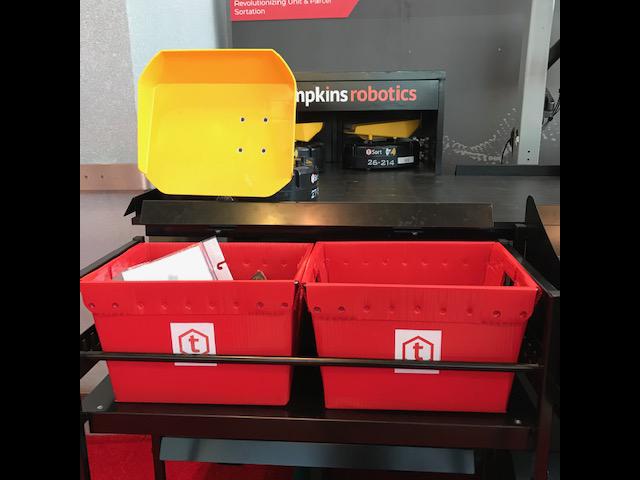
Kaarin Vembar for Retail Dive
A flying start
When shoppers think of the future of retail there is a good chance they visualize drones. That future is not far off, with Amazon acquiring a patent last year for delivery drones that react to humans on the ground.
One company, Pensa Systems, has an additional use for drones in mind — namely, its use for scanning inventory. The tech lives inside a store and can fly to navigate aisles. It provides retailers with an automated view of what’s on shelves and can predict out-of-stock products using AI. The tech doesn’t need a pre-existing understanding of what is in a store, but instead can “learn” as it operates.
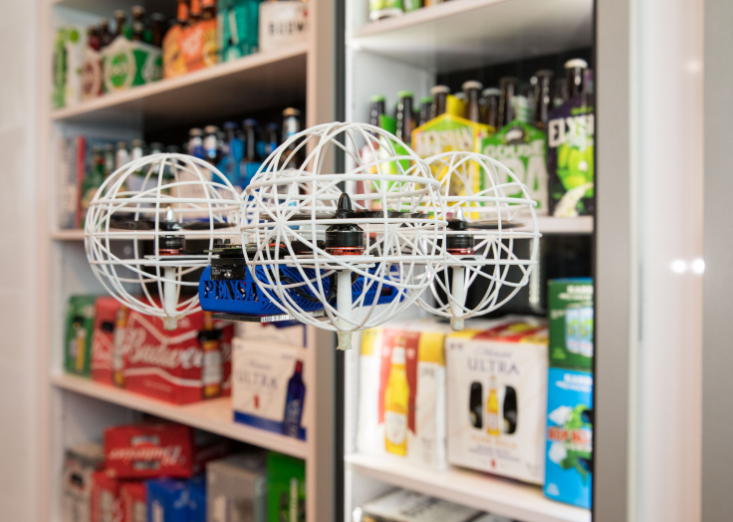
Photo via Intel
Get smart
Storage and pick-up lockers aren’t new. Companies like Home Depot use them to hold products for customers, many times for buy online, pick up in-store (BOPIS) services.
Compucom’s digital smart lockers are modular, customizable and contain compartments that accommodate products of varying sizes. The units also have refrigeration and temperature control options (so products aren’t damaged in the hot sun). The ability to switch up locker sizing gives retailers additional room to provide BOPIS solutions for a wider array of items.
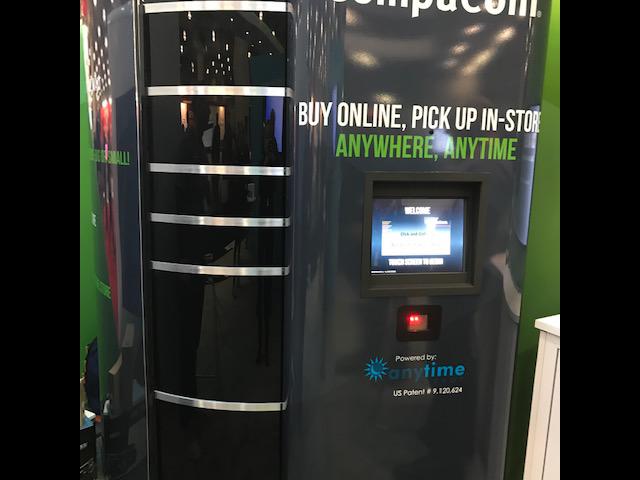
Kaarin Vembar for Retail Dive
Zip in and out
Zippin is one of the first challengers in the United States to Amazon Go with its cashierless shopping experience. Customers download a QR code to enter a store, shop and then leave without a formal checkout process. A receipt of items purchased will be sent to the shopper’s app.
Zippin’s tech involves overhead cameras versus cameras that are mounted in corners in an effort to see crowds and products in a different way and to increase accuracy.
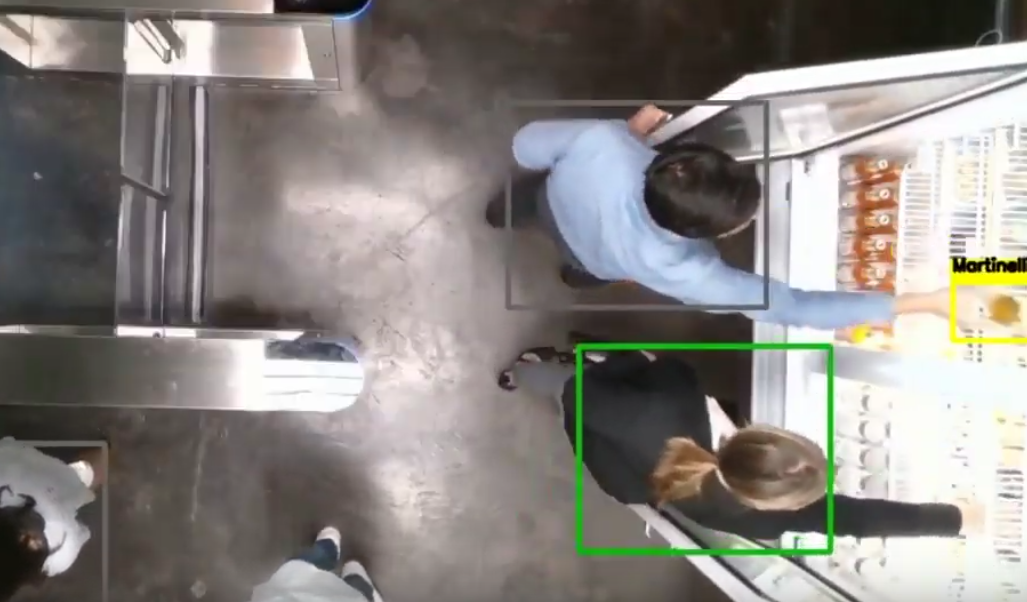
Image from Zippin, via YouTube
It’s a minority report
Cineplex Digital Media utilizes screens to advertise to consumers, create connections to brands and obtain data.
The company’s exhibit at NRF featured a screen that recognized physical traits of a person standing in front of a screen including gender, age, clothing and facial hair. A smaller “accent screen” to the side starts to mimic the data that was gathered to match the user. The screens slowly change to show the user appealing products.
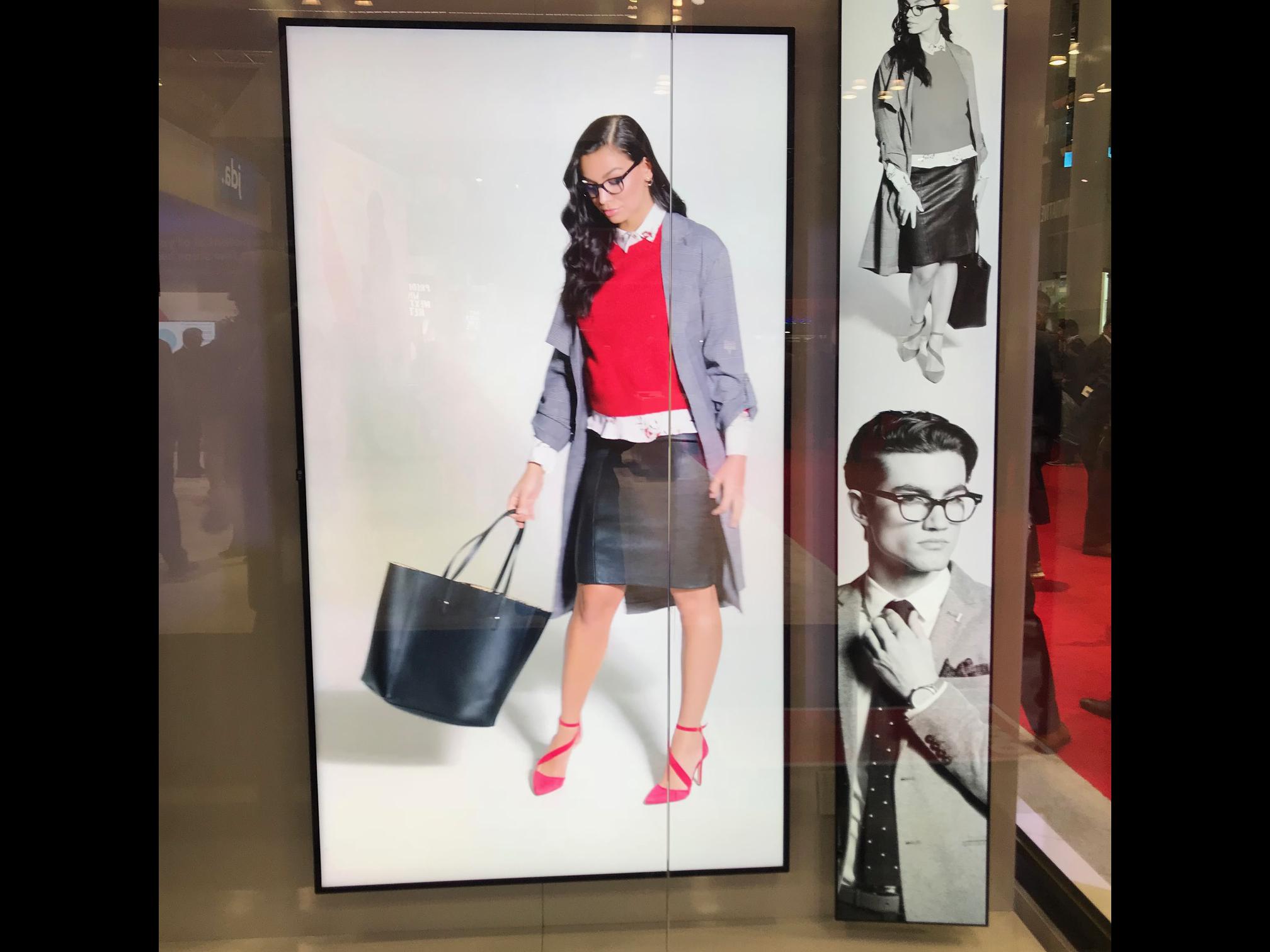
Kaarin Vembar for Retail Dive

